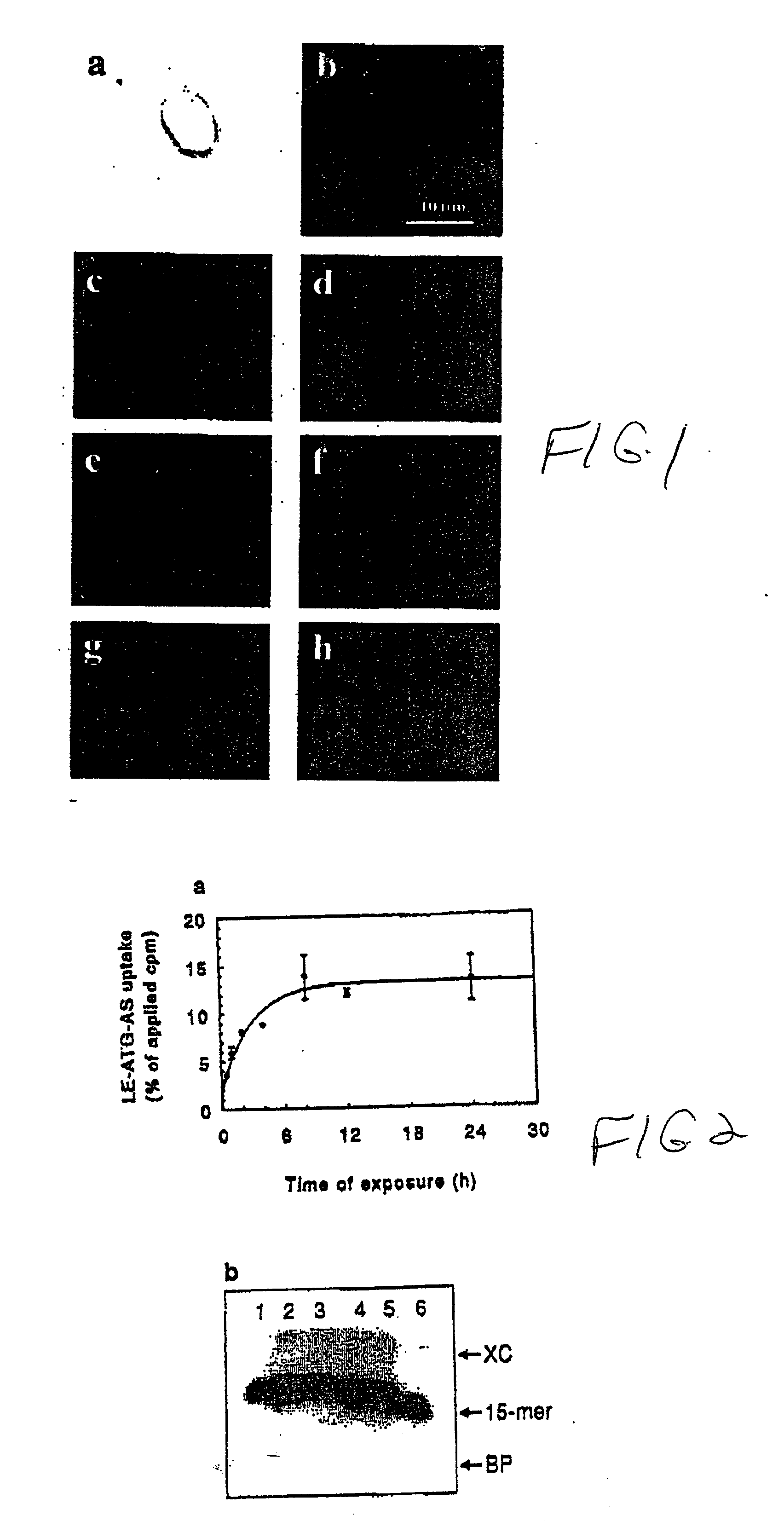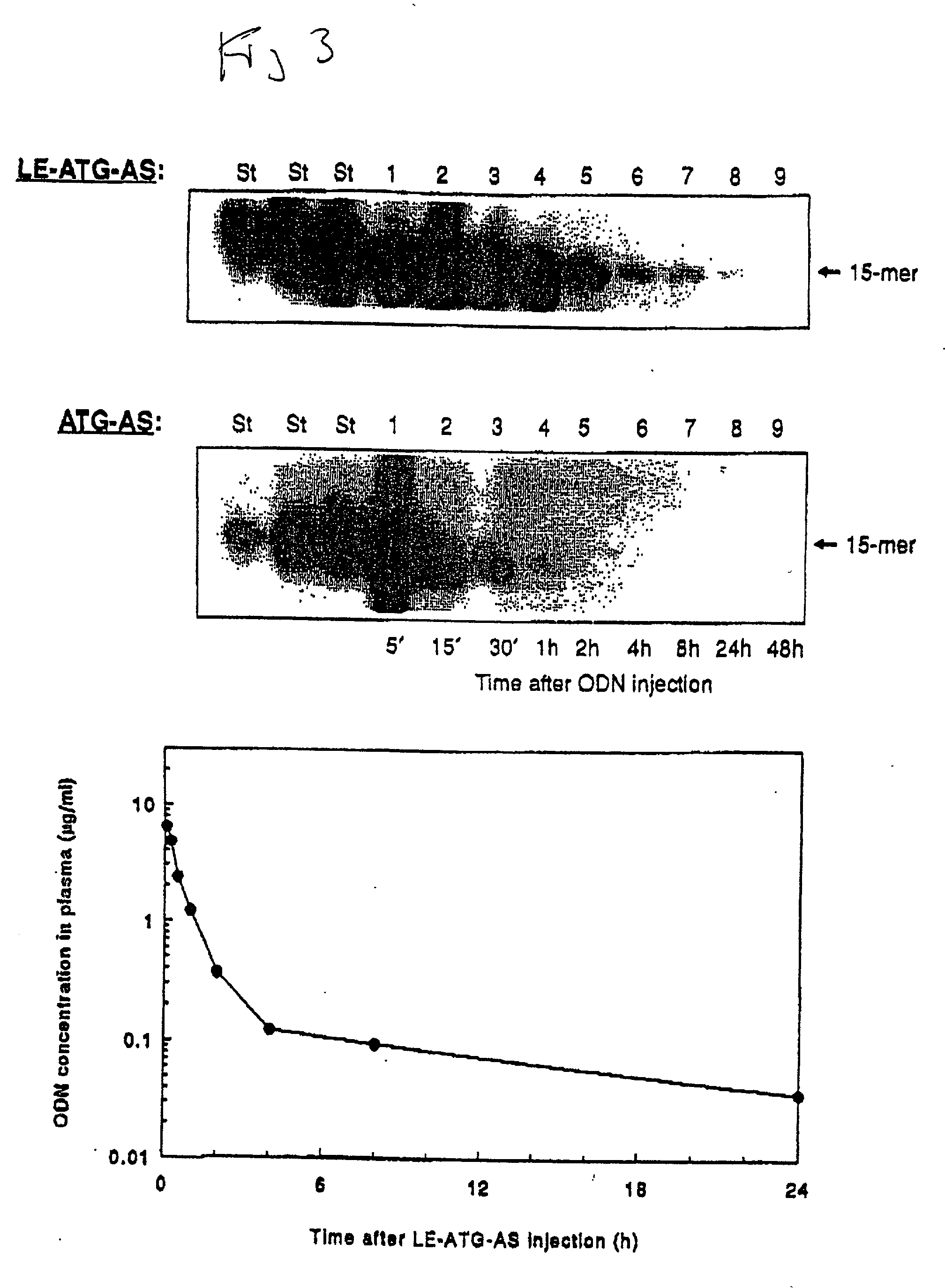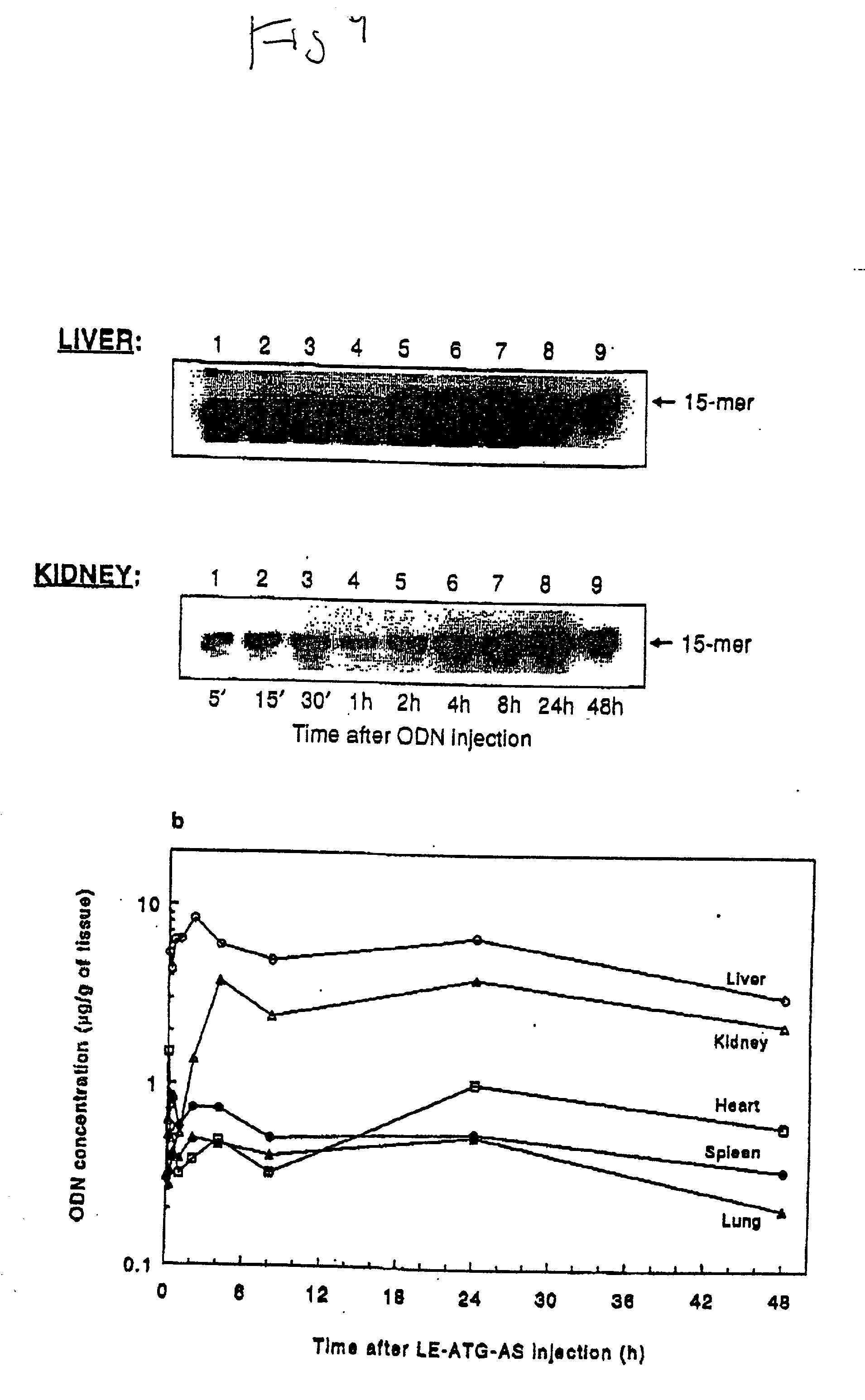Chemosensitizing with liposomes containing oligonucleotides
a technology of oligonucleotide and liposome, which is applied in the direction of biocide, drug composition, peptide/protein ingredients, etc., can solve the problems of toxicity of non-targeted chemotherapeutics, fraught chemotherapeutics, and inability to target, etc., to achieve enhanced serum stability and targeting capability
- Summary
- Abstract
- Description
- Claims
- Application Information
AI Technical Summary
Benefits of technology
Problems solved by technology
Method used
Image
Examples
example 2
[0123] Materials and Methods
[0124] Cell Culture
[0125] SQ-20B tumor cells were grown as a monolayer in Dulbecco's modified Eagle's medium (DMEM) (GIBCO BRL, Grand Island, N.Y.) supplemented with 20% heat-inactivated fetal bovine serum (FBS), 2 mM glutamine, 0.1 mM nonessential amino acids, 0.4 .mu.g / ml hydrocortisone, 100 .mu.g / ml streptomycin, and 100 U / ml penicillin.
[0126] Oligodeoxyribonucleotides
[0127] A 20-mer phosphorothioate antisense ODN (ISIS 5132 / 5132: 5'-TCC-CGC-CTG-TGA-CAT-GCA-TT-3') corresponding to the 3'-untranslated region (3'-UTR) of human c-raf-1 MRNA and a seven-base mismatched phosphorothioate antisense ODN (ISIS 10353 / 10353; 5'-TCC-CGC-GCA-CTT-GAT--GCA-TT-3') were designed and synthesized as described previously (Monia et al., 1996a,b). A 20-mer phosphorothioate sense ODN (5'-ATT-GCA-TGT-CAC-AGG-CGG-GA-3') was synthesized at Lofstrand Labs Limited (Gaithersburg, Md.) as described previously (Soldatenkov et al., 1997).
[0128] Preparation of Cationic Liposomes
[0129]...
example 3
[0164] Materials and Methods
[0165] Preparation of DMTAP:PC: CHOL Liposomes
[0166] Liposomes having a molar ratio of 1,2-dimyristoyl-3-trimethyl ammonium propane (DMTAP): phosphatidylcholine (PC): and cholesterol (CHOL), of 1:3.2:1.6, and having encapsulated therein an antitumor raf oligonucleotide (ATG-AS) were prepared using substantially the same methods described previously.
In Vitro Results
[0167] A) Enhanced Cellular Uptake of Antisense raf Oligodeoxyribonucleotides Encapsulated in Liposomes Comprised of DMTAP:PC:CHOL.
[0168] Dose-response uptake experiments: SQ-20B tumor cells were incubated with a mixture of radiolabeled (.sup.32P-.gamma.ATP) and an indicated dose of unlabeled antisense raf oligonucleotide (ATG-AS) either in the liposome encapsulated form (LE-ATG-AS) or free form (ATG-AS) (FIG. 17). The treatment lasted for 4 hours at 37.degree. C. in 1% serum containing medium. Following incubation, cells were washed with phosphate buffered saline (PBS), detached by trypsinizati...
example 4
[0177] Use of Raf Antisense Vigo and Chemotherapy in Human Prostate Cancer Model
[0178] This example relates to the antitumor efficacy of Leraf Aon in combination with cisplatin in athymic nu / nu mice bearing human prostate cancer (PC-3) xenografts. Male athymic mice were inoculated subcutaneously (s.c) with 5.times.10.sup.6 PC-3 cells in 0.2 ml phosphate buffered saline / animal. Tumor growth was monitored twice a week until the tumor volumes were 60 mm.sup.3 to 100 mm.sup.3 Animals were randomized into five treatment groups indicated above (n=8). Mice were treated with indicated doses intravenously via the tail vein, and the tumor sizes were monitored twice a week. Values shown are mean.+-.s.d. As shown in FIG. 23, the oligo / cationic liposomal formulation substantially potentated the efficacy of cisplatin as shown by reduced tumor volume relative to the control.
PUM
| Property | Measurement | Unit |
|---|---|---|
| molar ratios | aaaaa | aaaaa |
| concentration | aaaaa | aaaaa |
| concentration | aaaaa | aaaaa |
Abstract
Description
Claims
Application Information
 Login to View More
Login to View More - R&D
- Intellectual Property
- Life Sciences
- Materials
- Tech Scout
- Unparalleled Data Quality
- Higher Quality Content
- 60% Fewer Hallucinations
Browse by: Latest US Patents, China's latest patents, Technical Efficacy Thesaurus, Application Domain, Technology Topic, Popular Technical Reports.
© 2025 PatSnap. All rights reserved.Legal|Privacy policy|Modern Slavery Act Transparency Statement|Sitemap|About US| Contact US: help@patsnap.com



